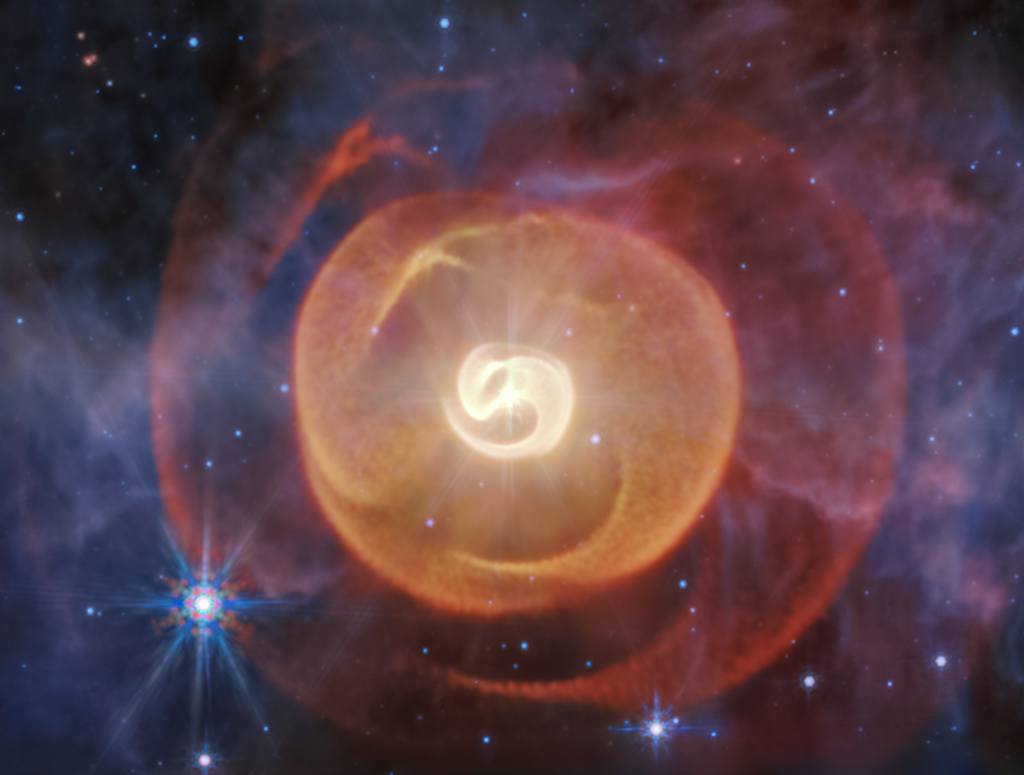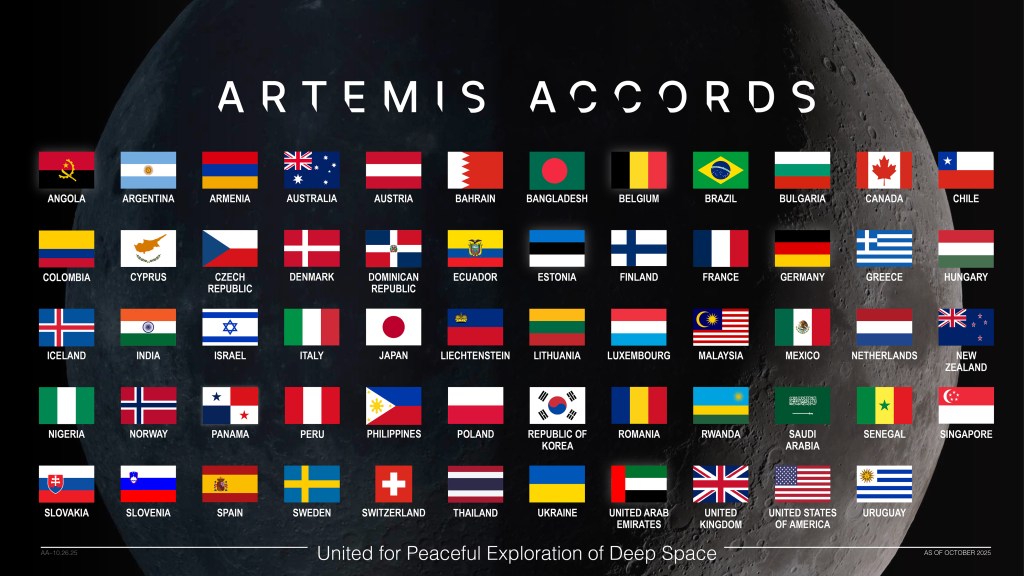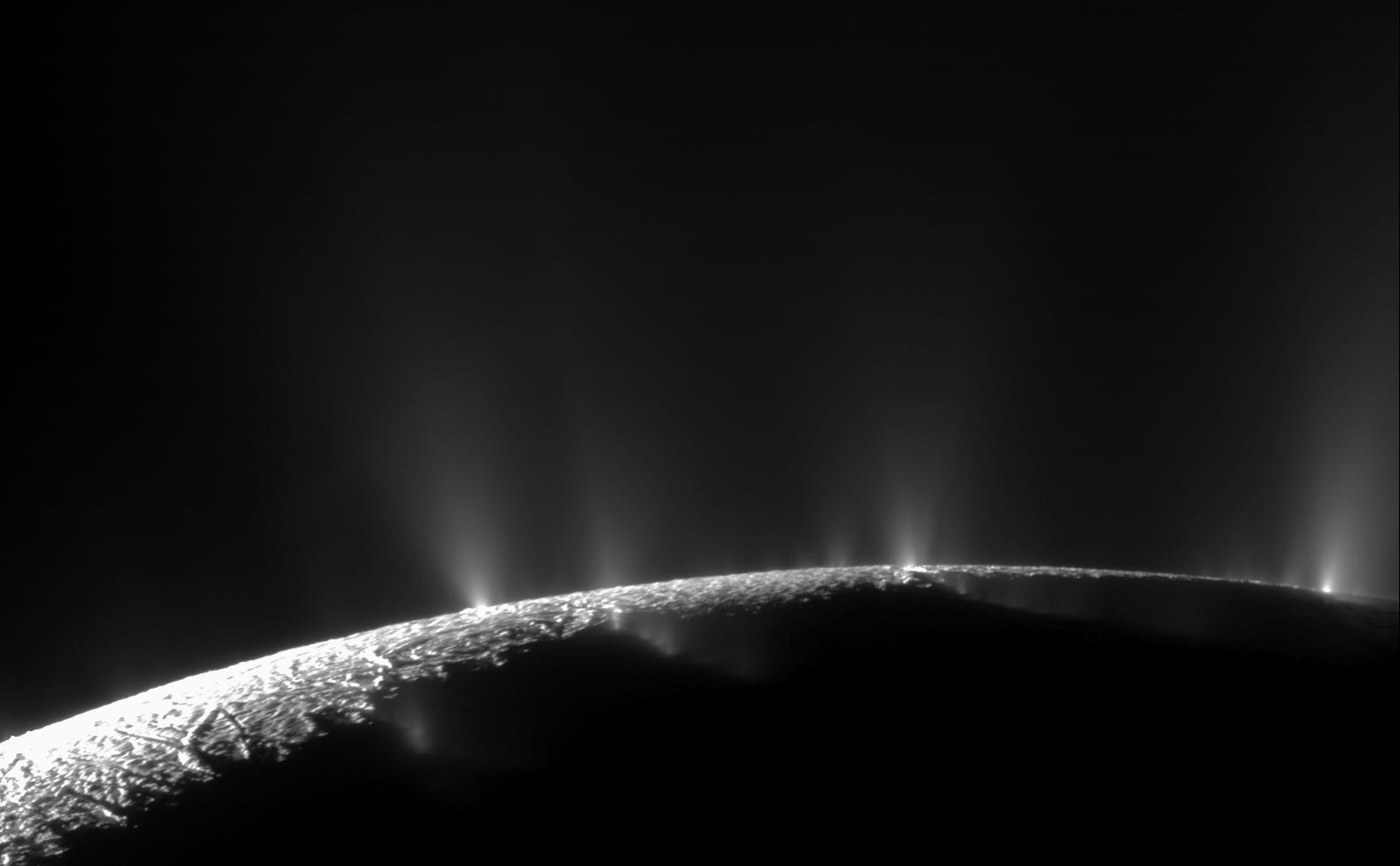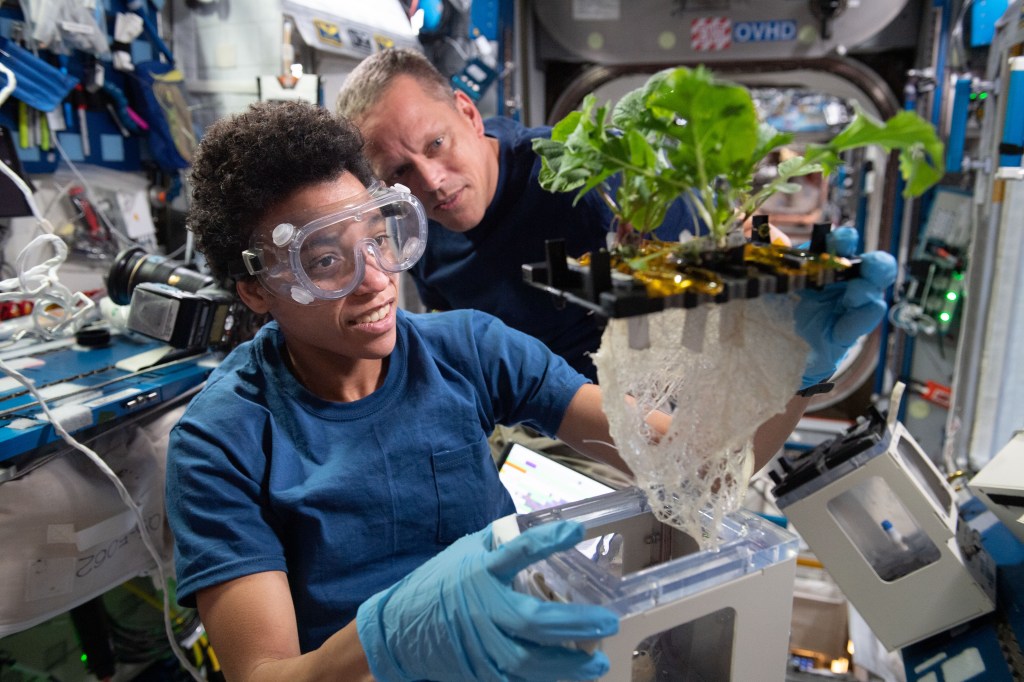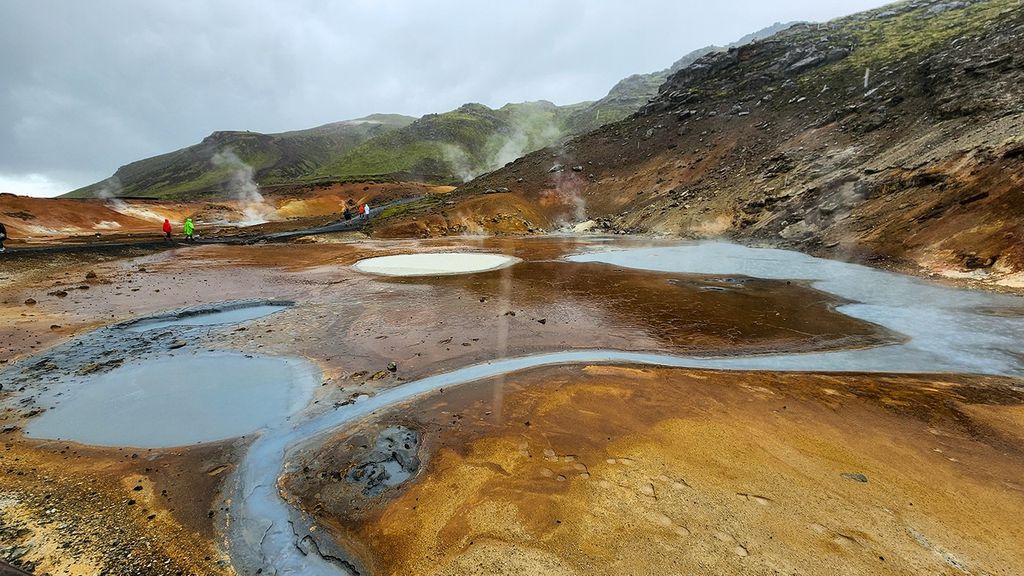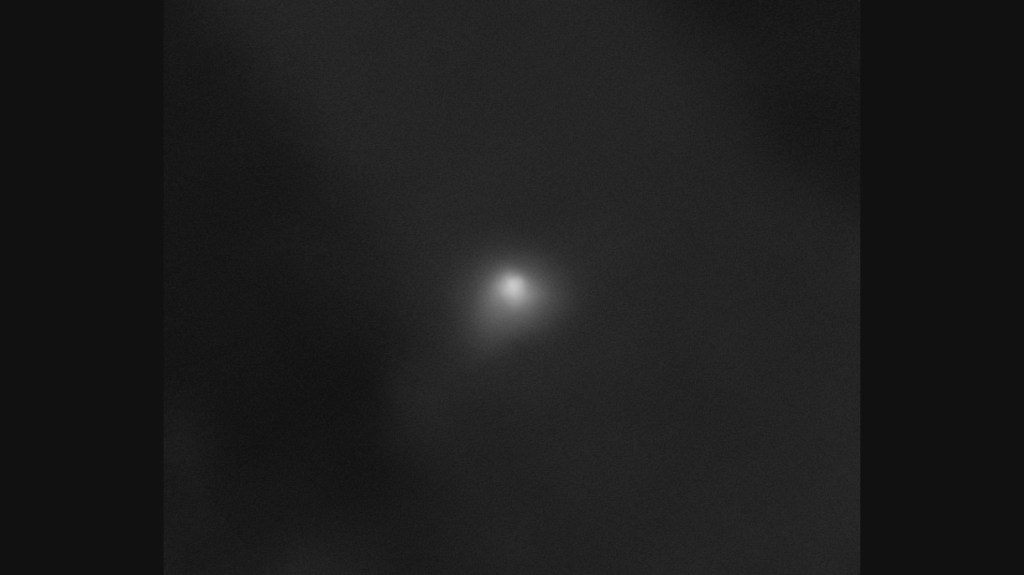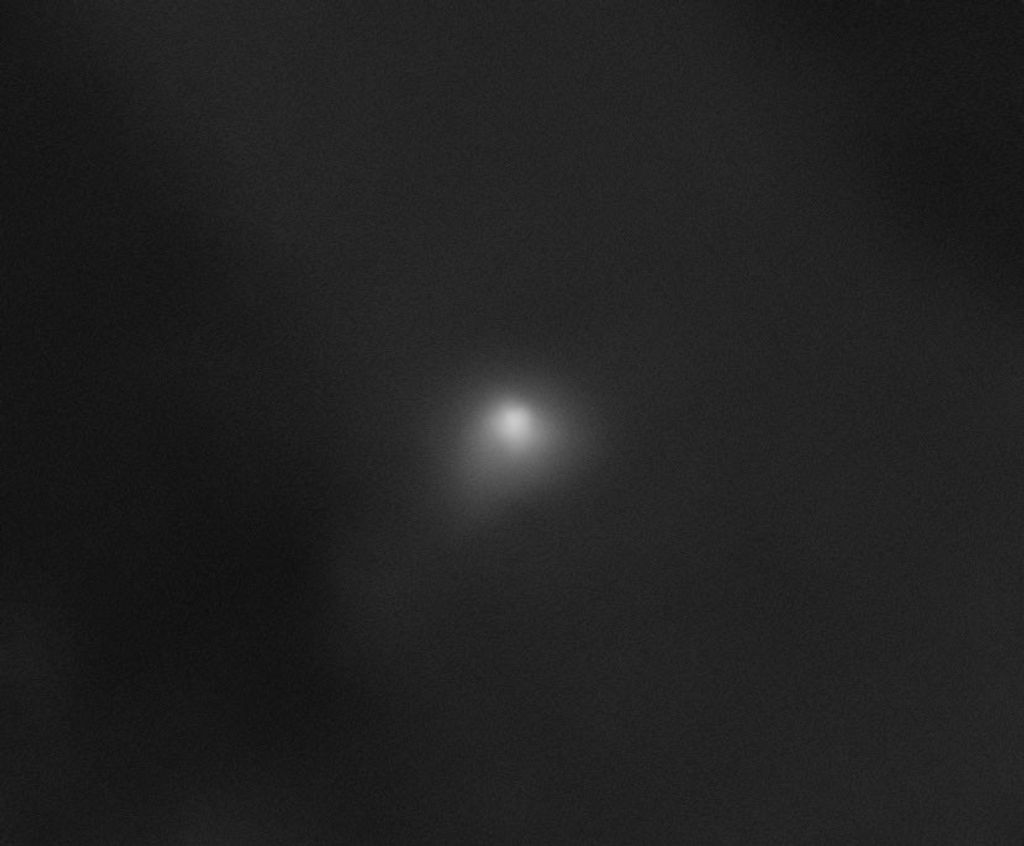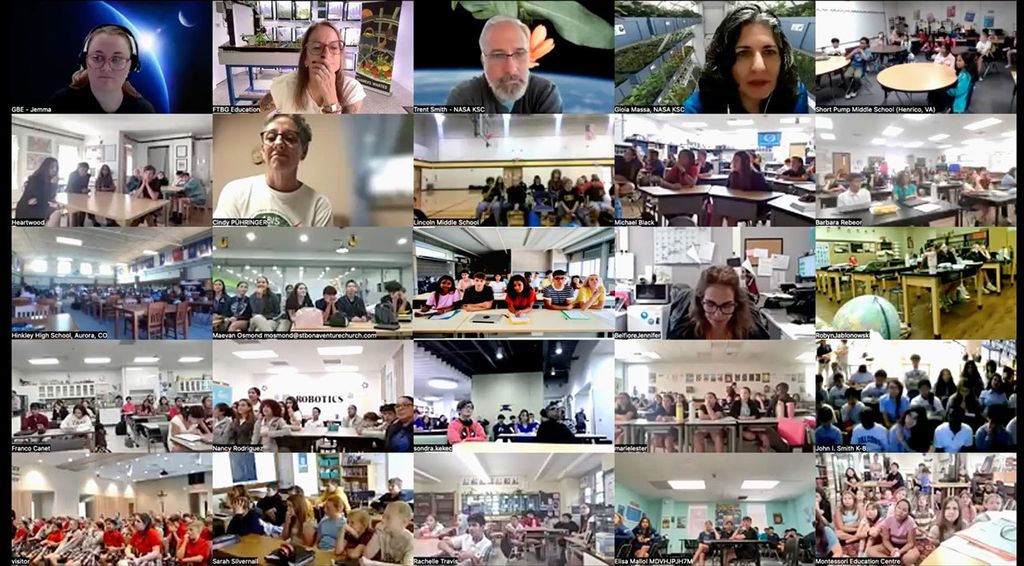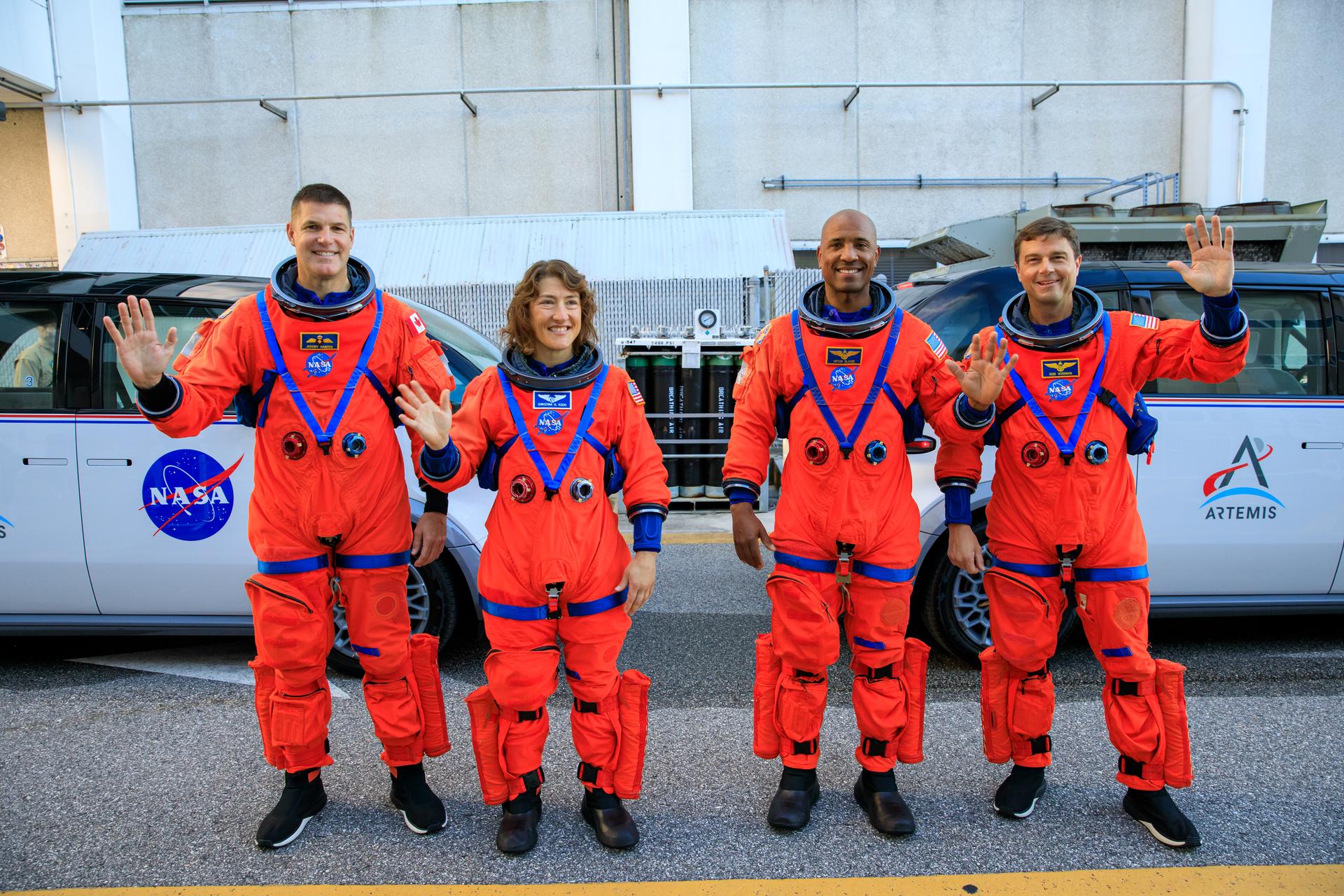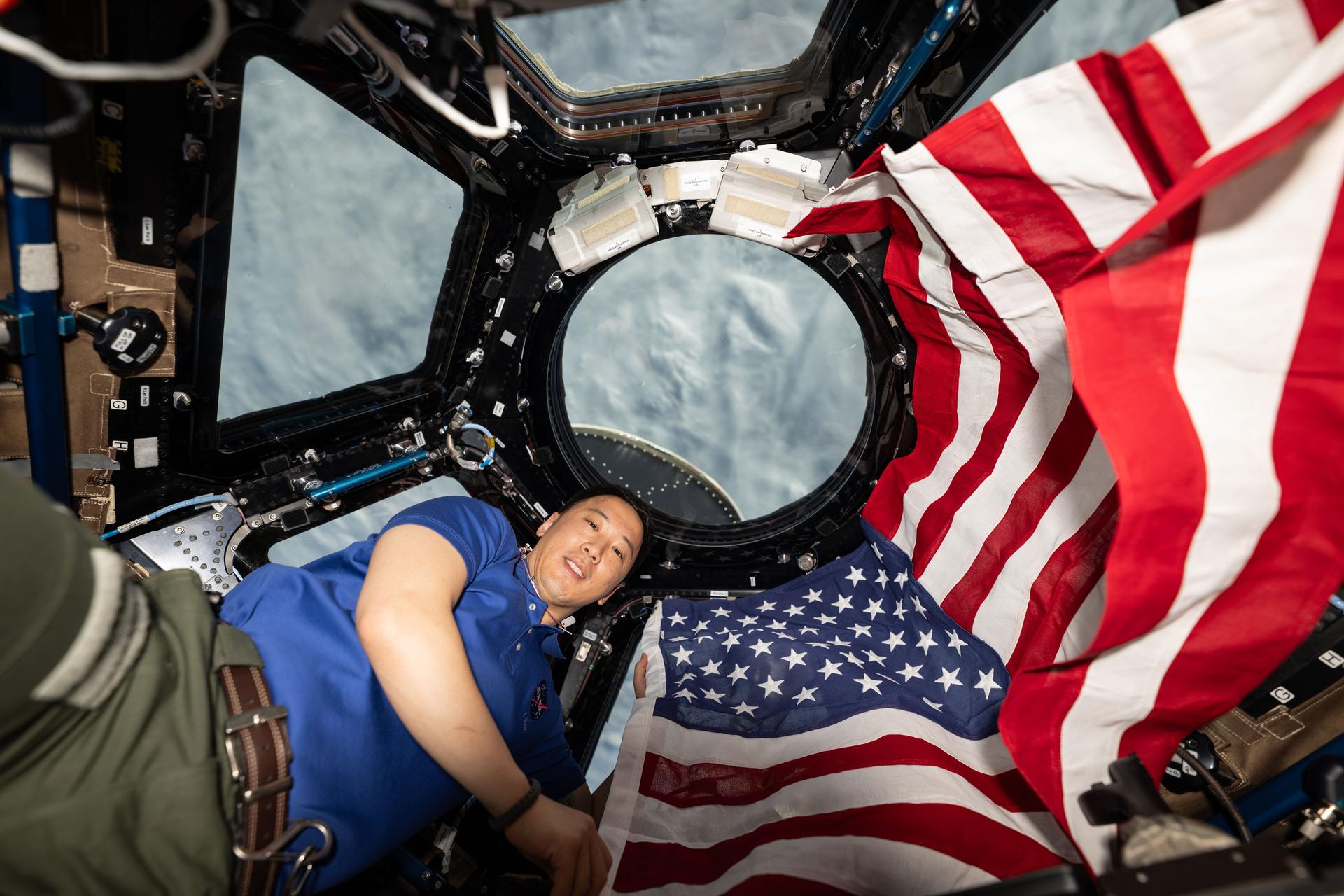1 min read
Illustration of Star Interactions in the Southern Ring Nebula
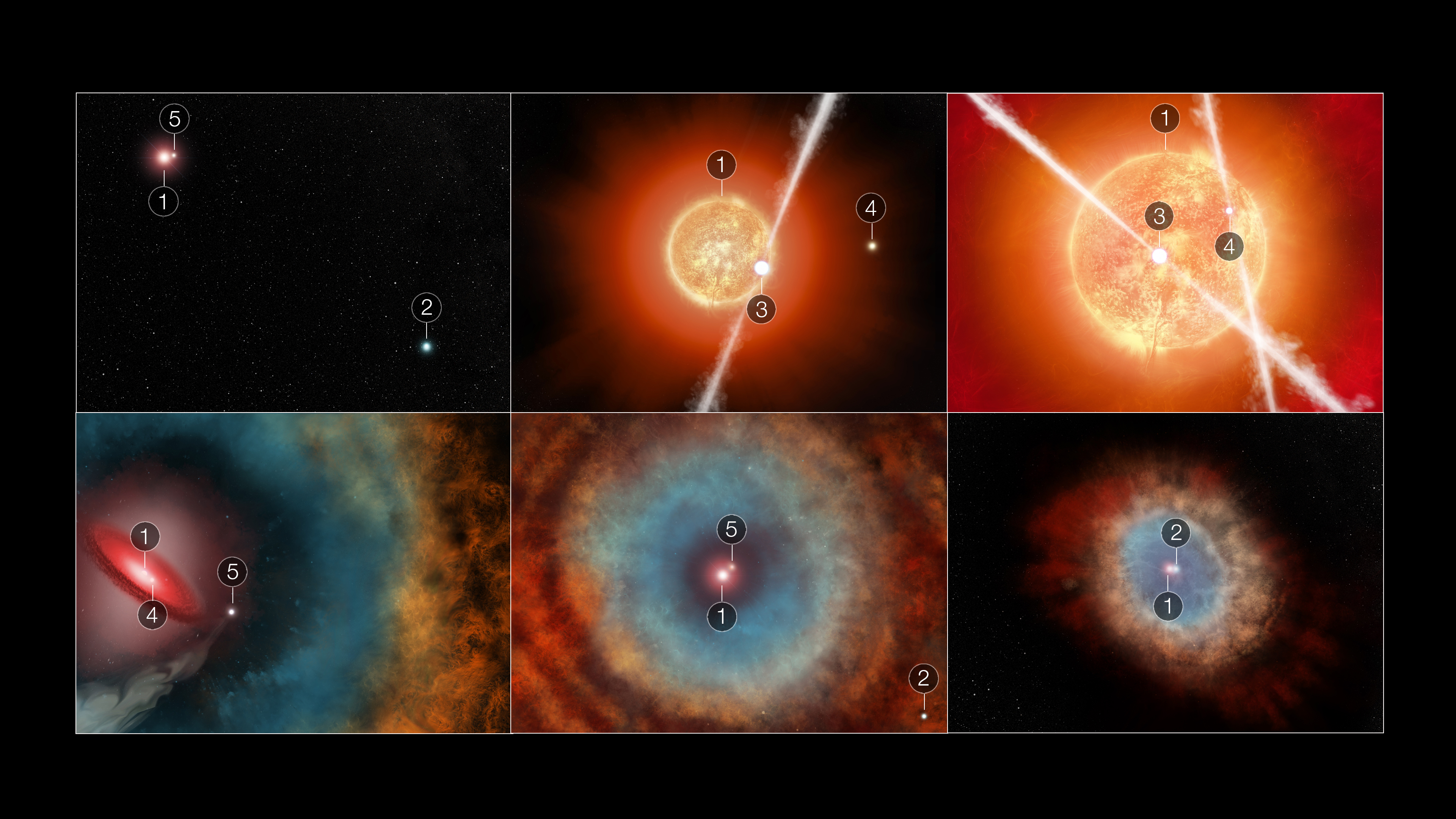
How did all the “partygoers” – up to five stars – create the Southern Ring Nebula? Let’s hit “rewind” and replay the interactions that might have created the scene!
First, it’s important to know that none of these illustrations are properly scaled, and three or as many as four of the stars would be too small and dim to appear in Webb’s image. Second, star 1 and star 2 are the only stars we see in the sixth and final panel above. The remaining “guests” will be known as stars 3, 4, and 5. They are all much less massive – in other words far smaller and dimmer – than stars 1 and 2.
The first illustration shows a wider field. Star 1, the most massive of this group of five stars, is the fastest to age and is responsible for creating the planetary nebula. Star 2 very slowly orbits star 1, which is easier to see in the last panel. All is relatively quiet at this stage as they orbit one another, though there is another star on the scene, number 5. It orbits star 1 far more tightly than star 2 does.
Cue the action! The second panel zooms way in on the scene – and two other companions appear in view. Star 1 has begun to swell as it ages rapidly, swallowing star 3. Through gravity, star 3 starts to draw in material from star 1 and launches jets in both directions. Star 4 is close by, but not yet interacting.
The third panel shows how much star 1 has expanded as it ages. Two companions also enter the mix. Stars 3 and 4 have sent off a series of bipolar jets. As these two stars interact, the jets they sent out are tumbled, which leads to the irregular, wavy edges of the gas and dust ejected by aging star 1. Both companions 3 and 4 are interacting within the gas and dust star 1 has ejected.
In panel 4, we zoom out to see more of the scene. Ultraviolet light and a fast, spherical wind from the newly exposed ultra-hot core of star 1 is helping to carve out its previously ejected gas and dust, creating a bubble-like cavity. There is also a leftover disk of material from the previous interactions with star 3. Star 3 is no longer visible, but star 5 is now in view. It has a wider orbit and is drawing “lines” through the ejected gas and dust from star 1 as it orbits, like a knife through a bowl of icing.
Now, it’s time to zoom out even wider! At this stage, we’re getting closer to a view of the planetary nebula we see today. The fifth panel shows the same trio – stars 1 and 2 with star 5. Now, to mix it up again: As it orbits, star 5 continues to interact with the ejected gas and dust that slowly travels farther and farther from star 1 into the surrounding space, generating the system of large rings seen in the outer nebula.
The sixth panel portrays the scene as we observe it today – by zooming all the way out, we see only stars 1 and 2 in the Southern Ring Nebula.
Now that you’re oriented, read the full recap of the potential events.
Extended Description and Image Alt Text
Extended Description
This six-panel illustration depicts the interactions among five stars that may have helped make the shapes in the Southern Ring Nebula.
In panel 1, a reddish star labeled 1 appears at left, with a smaller light red star labeled 5 orbiting it. To their right is a white star, labeled 2. The background is black.
In panel 2, the red star, labeled 1, takes up most of the frame. It is whiter at the center, and has semi-transparent red layers surrounding it, which extend almost to the edges of the frame. A tiny white star,
labeled 3, appears within star 1’s central white region. Star 3 is emitting thin white bipolar jets to the top right and bottom left. The smallest star, labeled 4, appears toward the right, just within the transparent red emission from star 1.
In panel 3, the central star, labeled 1, is shown significantly larger. Its white region takes up more than half the frame, and its red ejections take up the rest of the frame. Two stars appear within the white region of star 1. Star 3 appears small and toward the center, emitting jets to the left and right. Star 4 appears toward the bottom right of the white region of star 1 and is emitting jets toward the top right and bottom center.
Panel 4 zooms out significantly, showing a disk of red material with a white center, which represents star 1, at the far left. Star 4 is labeled within that disk, where white switches to red. There is a lighter pink circle of diffuse color surrounding the disk, a layer of deeper blue material that extends almost to the center of the frame outside of that. Beyond the blue is an area of gray dust that follows an arc toward the center top and bottom of the frame. At the center is a tiny white dot labeled star 5. To Its right, to the edge of the frame, are layers of red gas.
Panel 5 zooms out again, now only showing star 1, which is larger and has red emission around it, and star 5, which is whiter and appear within that red emission. They sit at the center of the frame. Outside of them is a blue circular region, followed by a loop of white, and then loops in orange, which extend off frame. The orange areas look irregular and disturbed. Toward the bottom right is a tiny white dot labeled star 2.
The sixth and final frame is an illustration of Webb’s image of the Southern Ring Nebula. Two stars, labeled 1, which is red, and 2, which is blue appear at center. They are surrounded by a circle of blue emission, which then transforms into a lighter orange, and then a deeper orange. The orange shape has irregular edges and extends only halfway across the frame. The surrounding background is black.
Image Alt Text
Six-panel illustration depicts the interactions among five stars that may have helped make the shapes in the Southern Ring Nebula. For more details, download the Text Description.
About the Object
- R.A. PositionR.A. PositionRight ascension – analogous to longitude – is one component of an object's position.10:06:58.54
- Dec. PositionDec. PositionDeclination – analogous to latitude – is one component of an object's position.-40:26:00
- ConstellationConstellationOne of 88 recognized regions of the celestial sphere in which the object appears.Vela
- DistanceDistanceThe physical distance from Earth to the astronomical object. Distances within our solar system are usually measured in Astronomical Units (AU). Distances between stars are usually measured in light-years. Interstellar distances can also be measured in parsecs.2,000 light-years (590 parsecs)
About the Data
- Data DescriptionData DescriptionProposal: A description of the observations, their scientific justification, and the links to the data available in the science archive.
Science Team: The astronomers who planned the observations and analyzed the data. "PI" refers to the Principal Investigator.
- Object NameObject NameA name or catalog number that astronomers use to identify an astronomical object.Southern Ring Nebula, NGC 3132, Eight-Burst Nebula
- Object DescriptionObject DescriptionThe type of astronomical object.Planetary Nebula
- Release DateDecember 8, 2022
- Science ReleaseNASA’s Webb Indicates Several Stars ‘Stirred Up’ Southern Ring Nebula
- CreditIllustration: NASA, ESA, CSA, STScI, Elizabeth Wheatley (STScI)
Related Images & Videos
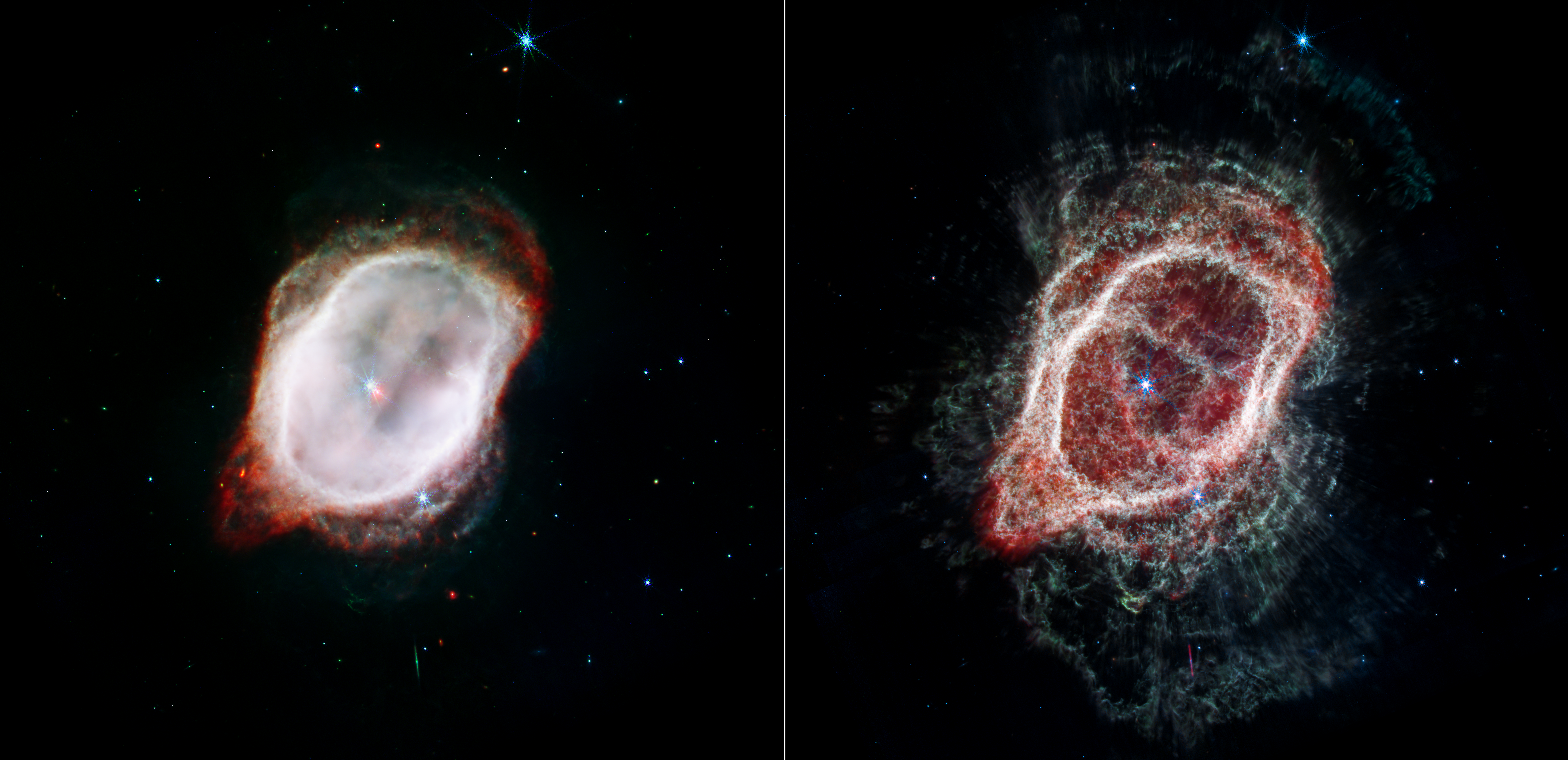
Two Views of the Gas in the Southern Ring Nebula (NIRCam and MIRI Composite Images)
The Webb Space Telescope offers dramatically different views of the same scene! Each image combines near- and mid-infrared light from three filters. At left, Webb’s image of the Southern Ring Nebula highlights the very hot gas that surrounds the central stars. This hot gas is...
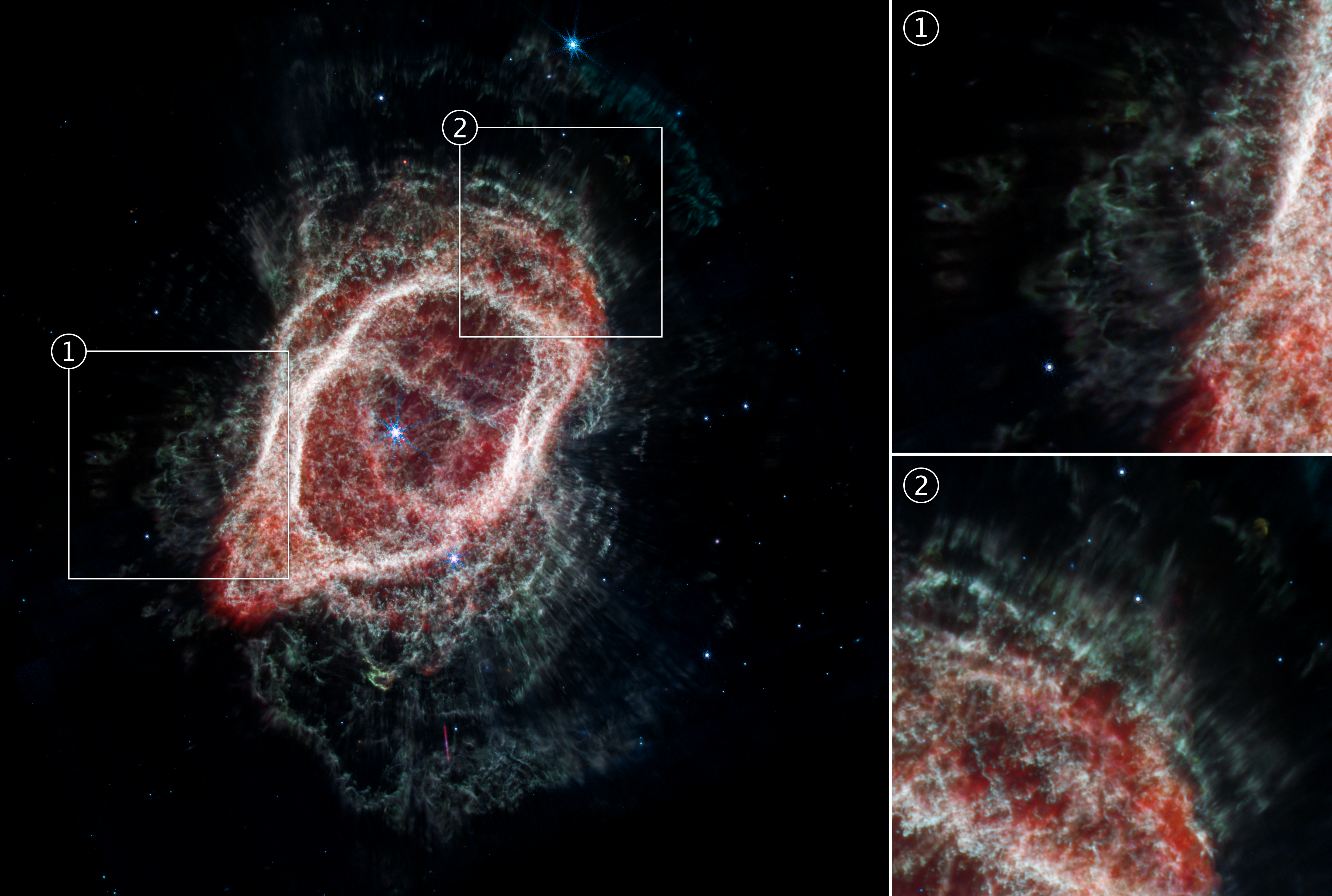
Southern Ring Nebula’s Spokes (NIRCam and MIRI Composite Image)
Examine the straight, brightly-lit lines that pierce through the rings of gas and dust around the edges of the Southern Ring Nebula in the Webb Space Telescope’s image. These “spokes” appear to emanate from one or both of the central stars, marking where light streams through...
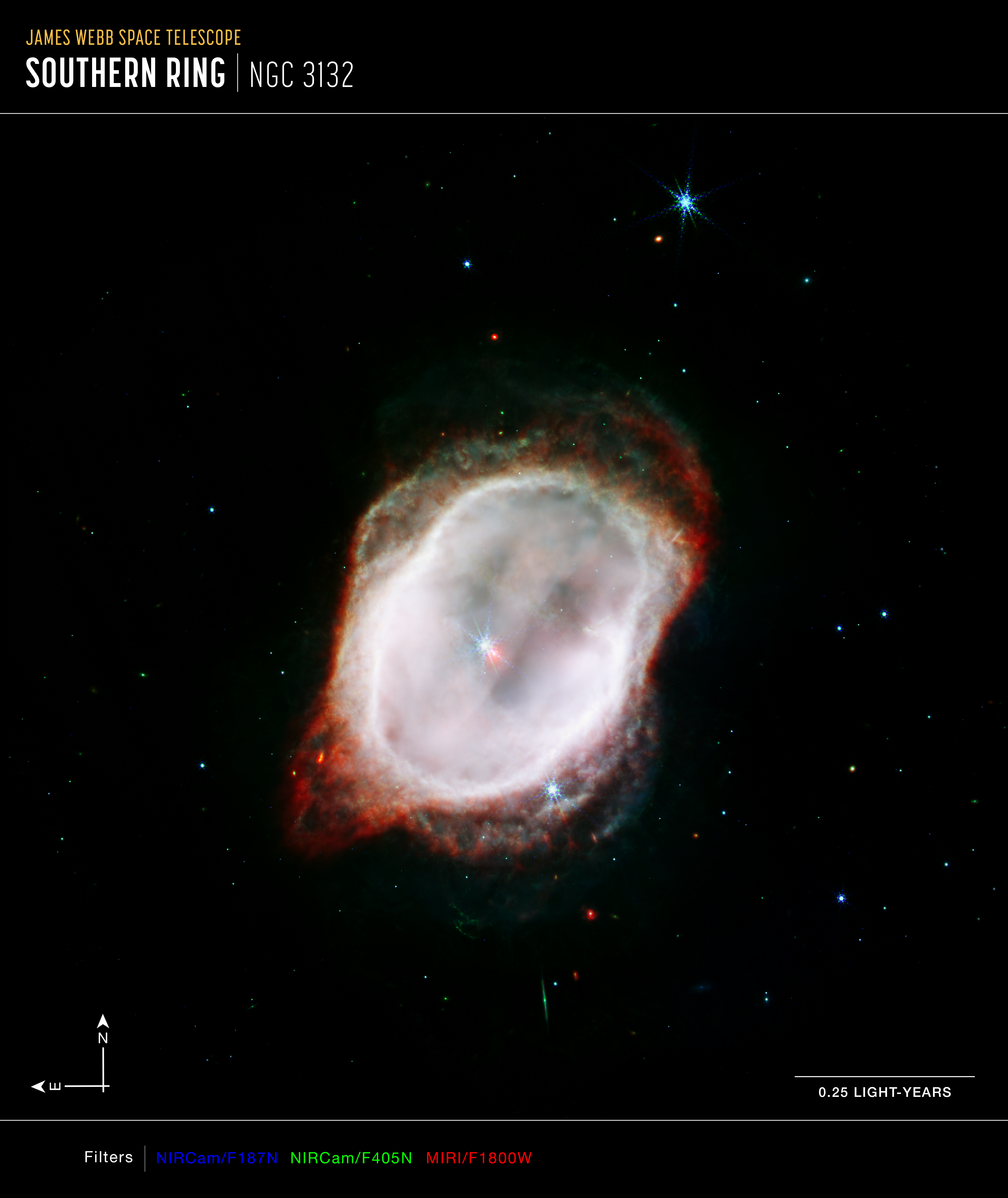
Southern Ring Nebula’s Gas (NIRCam and MIRI Composite Compass Image)
This image of the Southern Ring Nebula (NGC 3132), captured by Webb’s Near-Infrared Camera (NIRCam) and Mid-Infrared Instrument (MIRI), shows compass arrows, scale bar, and color key for reference. The north and east compass arrows show the orientation of the image on the sky....
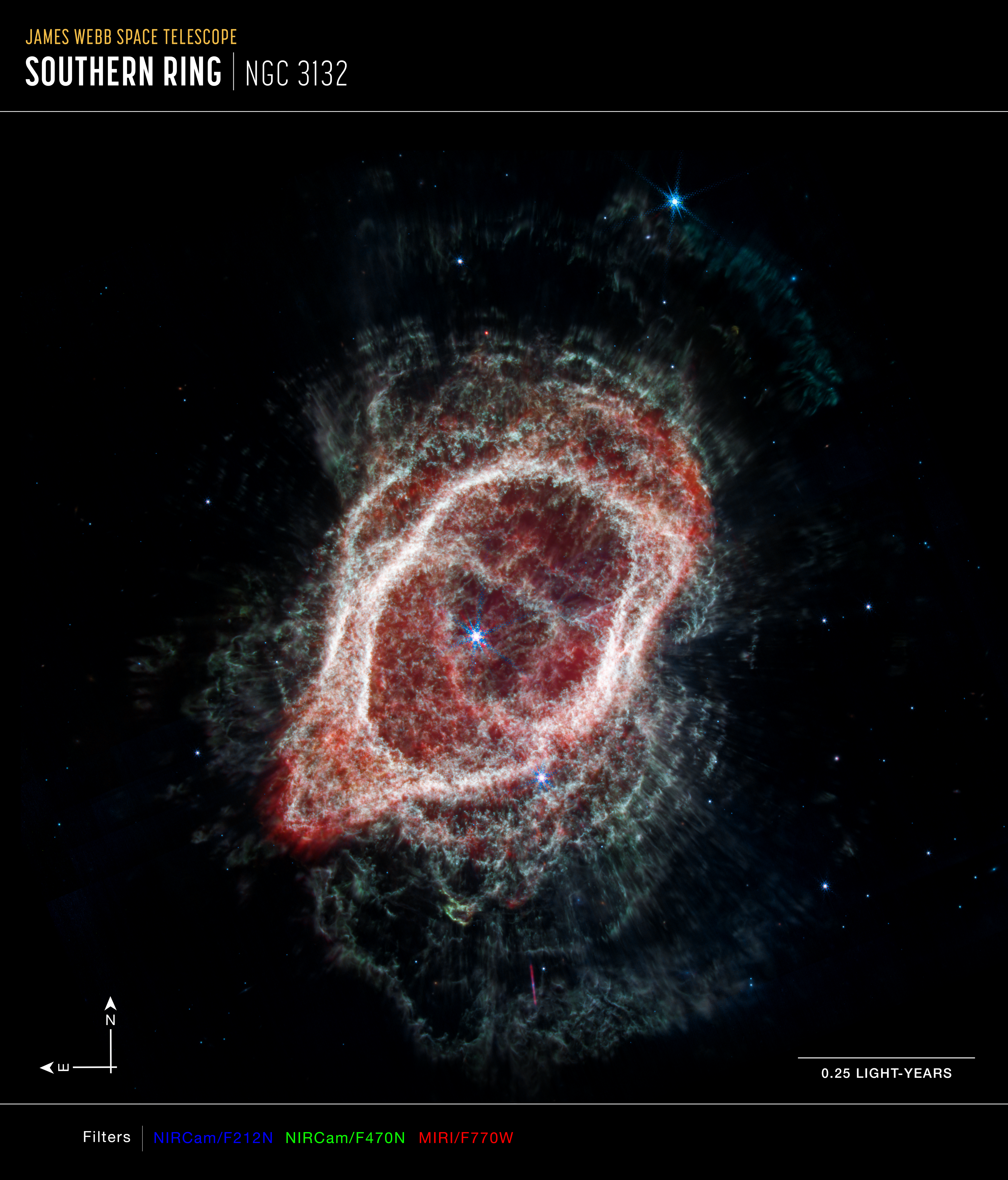
Southern Ring Nebula’s Spokes (NIRCam and MIRI Composite Compass Image)
This image of the Southern Ring Nebula (NGC 3132), captured by Webb’s Near-Infrared Camera (NIRCam) and Mid-Infrared Instrument (MIRI), shows compass arrows, scale bar, and color key for reference. The north and east compass arrows show the orientation of the image on the sky....
Share
Details
Laura Betz
NASA’s Goddard Space Flight Center
Greenbelt, Maryland
laura.e.betz@nasa.gov
NASA, ESA, CSA, STScI, Elizabeth Wheatley (STScI)

